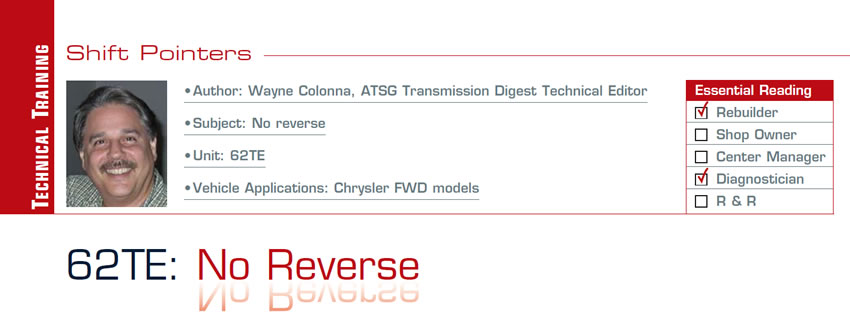
Shift Pointers
- Subject: No reverse
- Unit: 62TE
- Vehicle Applications: Chrysler FWD models
- Essential Reading: Rebuilder, Diagnostician
- Author: Wayne Colonna, ATSG, Transmission Digest Technical Editor
A vehicle using a 62TE transmission comes into the shop with a no-reverse complaint but drives well going forward. Even with the solenoid pack disconnected it still has no reverse but drives forward in failsafe third gear well.
When you refer to the component-application chart in Figure 1, at first glance it seems to appear that the reverse clutch could be the area of concern. Yet when the main box is disassembled and the reverse clutch is inspected all looks good. In fact, the fluid looks great and there are no signs of burning in any of the clutch packs.
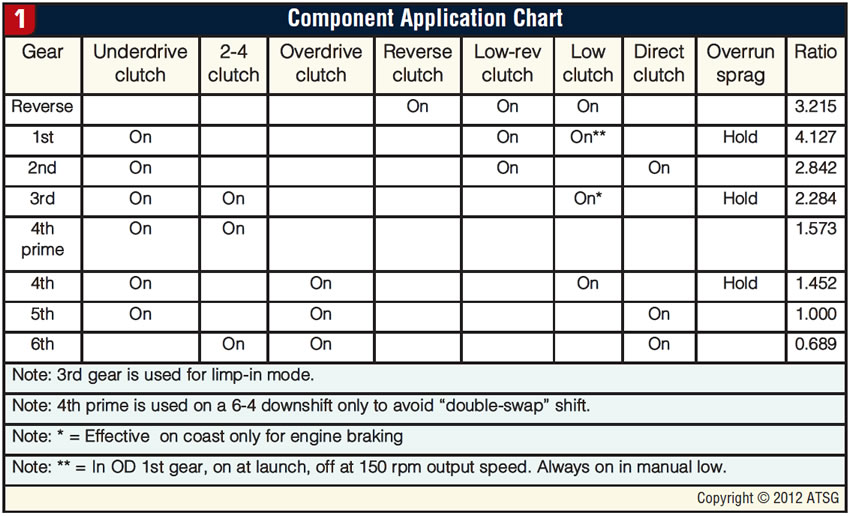
With a closer look at the application chart, you discover that the low clutch (on the underdrive centerline shaft, figures 2 and 3) does not need to work to have forward. The one-way clutch actually holds in first, third and fifth. The low clutch is applied only during certain driving conditions for additional holding capacity or engine braking. However, it is absolutely imperative that the low clutch hold for reverse to function.
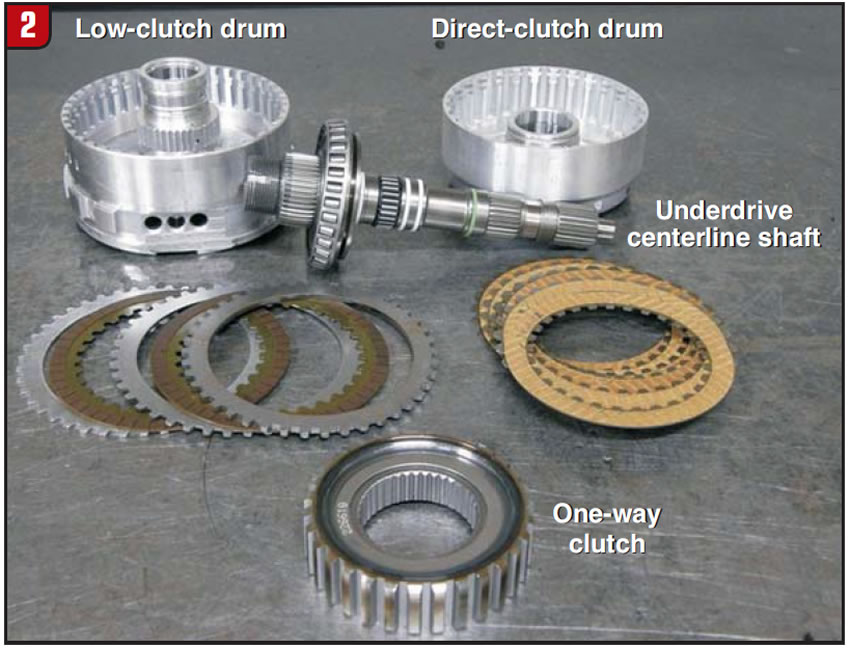
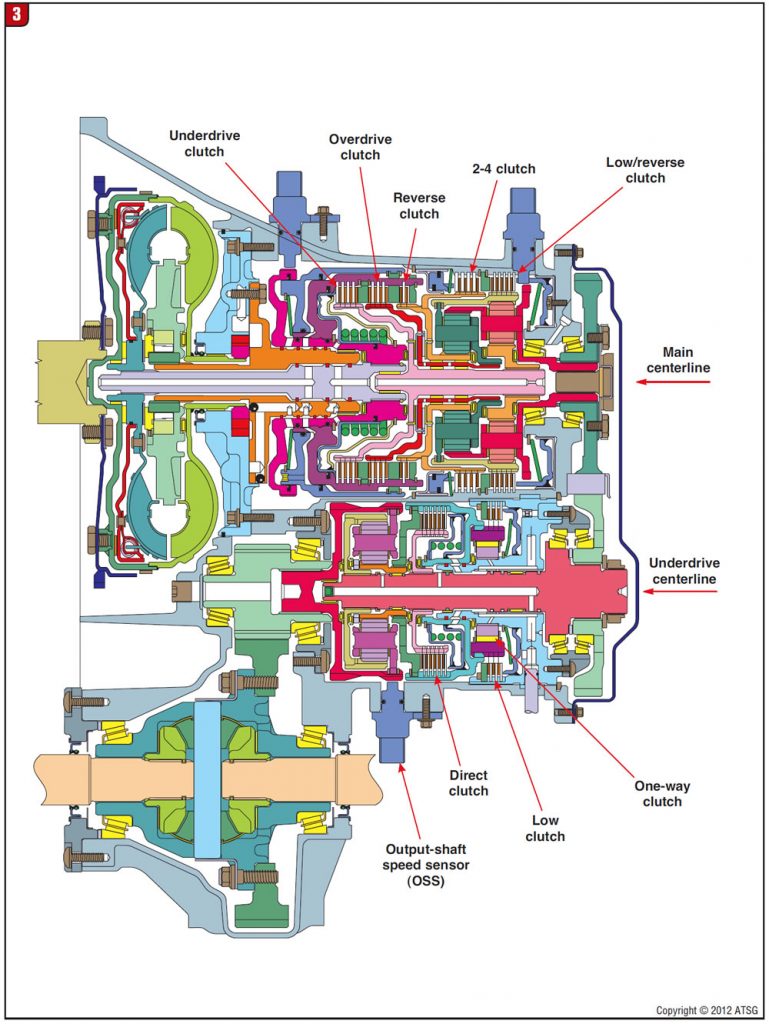
There are a few possible causes for this clutch not to apply, but the most common is the roughly 0.020-inch air-bleed capsule blowing out of the drum (figures 4 and 5).
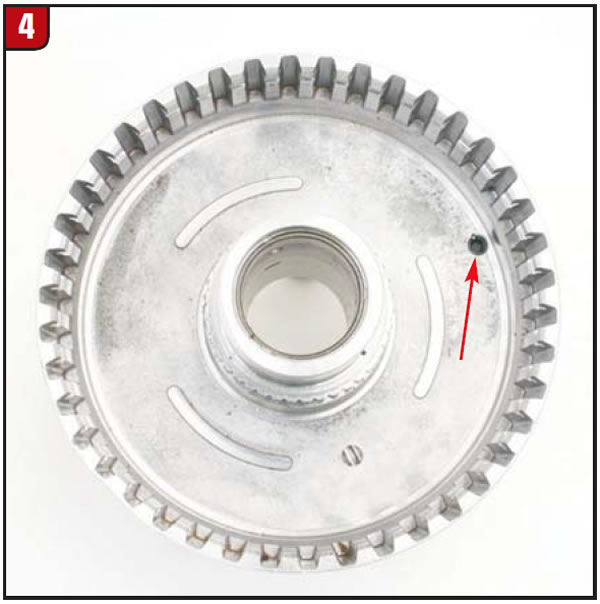

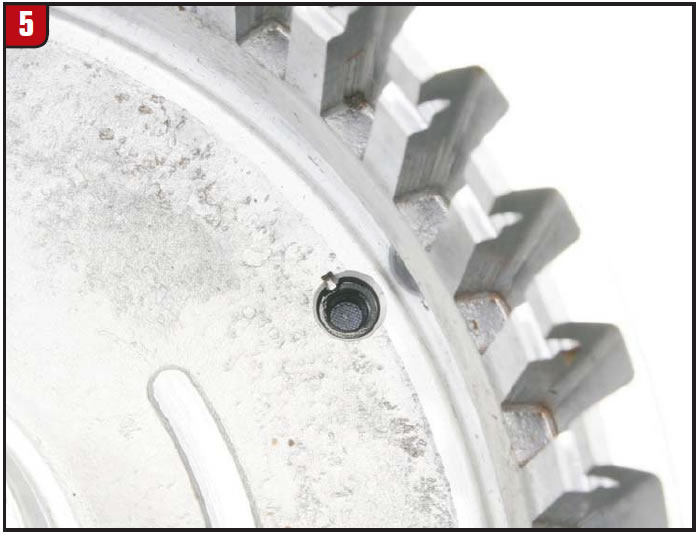
If the capsule is not properly staked into place, it can work its way out of the bore, causing a large-enough leak (Figure 6) to prevent the clutch from applying or causing it to burn.
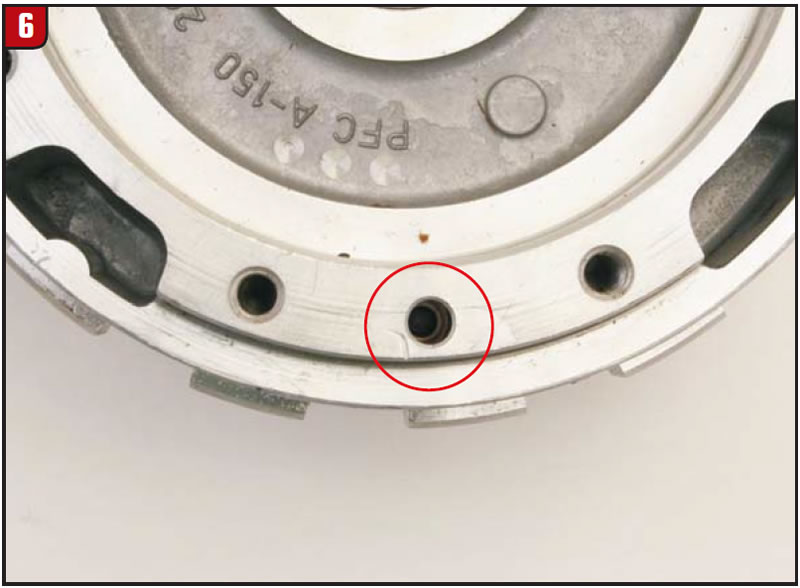
If you locate the screened orifice capsule and it is not damaged, you can reuse it if you stake it back in properly. If it’s damaged, you will need to fabricate one and save the drum, as this orifice is not sold separately.
Finding a good used low-clutch drum is not easy, either, as this is the drum with the direct-clutch sealing rings on it. The rings wear into the drum, enlarging their grooves (Figure 7). When this occurs, instead of having a nice 1-2 shift it either flares or goes to neutral. Since this is a common problem, good used drums can be difficult to locate. New ones from the dealer now come fully loaded for about $360.
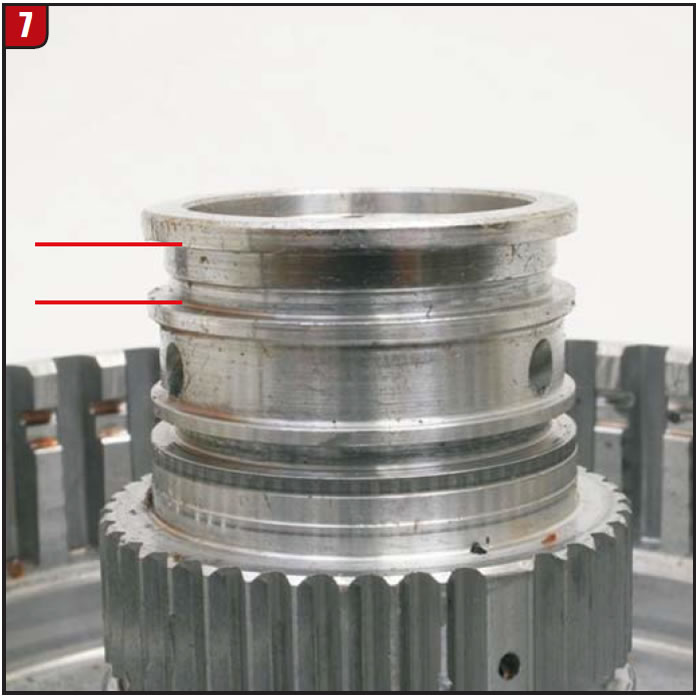
I hope someone will begin to re-sleeve the ring tower with these drums and offer them for less money. In the meantime, don’t throw those drums in the trash. Save them and perhaps use the screened orifice from one bad drum in a drum that needs it and still has a good ring tower.
One last thought: A perceived first-to-neutral shift can take place if the one-way clutch is bad. If you look at the application chart you will see that the low clutch is applied in first gear until the output-speed sensor is at 150 rpm. Once it has reached this low rpm level the low clutch is released and the one-way clutch holds. If the one-way clutch cannot hold, the vehicle dumps to neutral. This is not to be confused with a bad low-clutch-drum ring tower. A dump to neutral when the OSS is at 150 rpm occurs much earlier than the actual 1-2 shift normally would.














